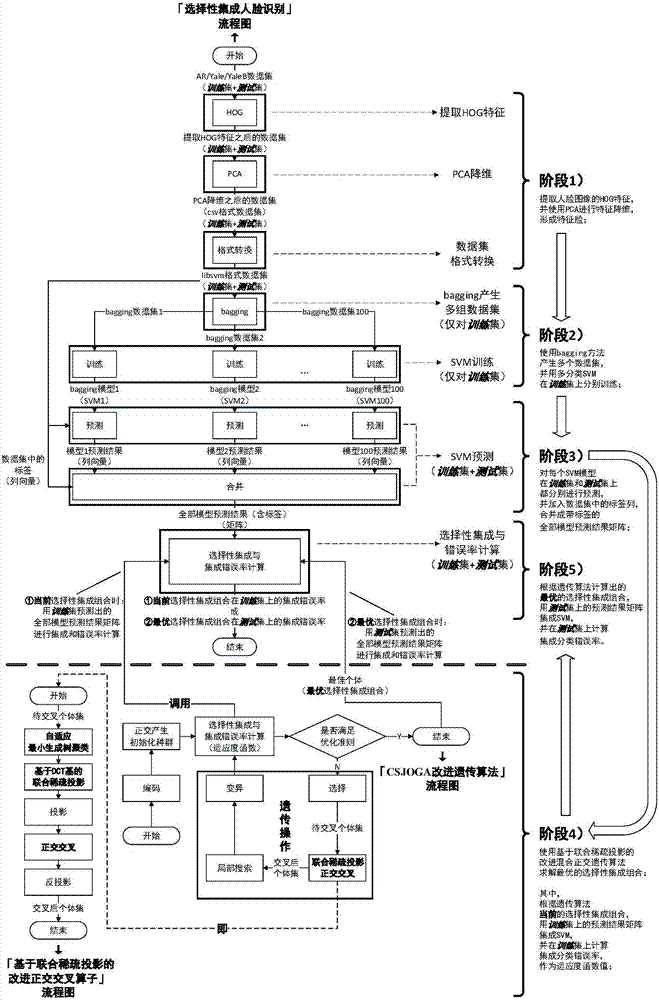Selective integration face identification method based on CSJOGA
A selective, face recognition technology, applied in the new field of face recognition of multi-class SVM, can solve the problems of long code length, slow convergence speed, slow algorithm convergence, etc., to reduce storage and computational overhead, improve recognition speed, The effect of improving accuracy
- Summary
- Abstract
- Description
- Claims
- Application Information
AI Technical Summary
Problems solved by technology
Method used
Image
Examples
Embodiment Construction
[0020] Stage 1) Extract the HOG feature of the face image, and use PCA to perform feature dimensionality reduction to form an eigenface.
[0021] Step 1. Extract HOG features for multi-category face datasets.
[0022] Step 2. Use PCA to reduce the dimensionality of the face HOG features extracted in step 1, and save it in csv format.
[0023] Step 3. Convert the data set in csv format obtained in step 2 into a format supported by libsvm.
[0024] Phase 2) Use the bagging method to generate multiple data sets, and use multi-class SVM to train separately on the training set.
[0025] Step 4. Bagging the training data set in libsvm format obtained in step 3 to generate 100 new data sets with the same size as the original data set.
[0026] Step 5. The 100 bagging data sets generated in step 4 are trained with multi-class SVM.
[0027] Stage 3) Predict each SVM model on the training set and test set respectively, and add the label column in the data set, and merge into a matrix...
PUM
 Login to view more
Login to view more Abstract
Description
Claims
Application Information
 Login to view more
Login to view more - R&D Engineer
- R&D Manager
- IP Professional
- Industry Leading Data Capabilities
- Powerful AI technology
- Patent DNA Extraction
Browse by: Latest US Patents, China's latest patents, Technical Efficacy Thesaurus, Application Domain, Technology Topic.
© 2024 PatSnap. All rights reserved.Legal|Privacy policy|Modern Slavery Act Transparency Statement|Sitemap



